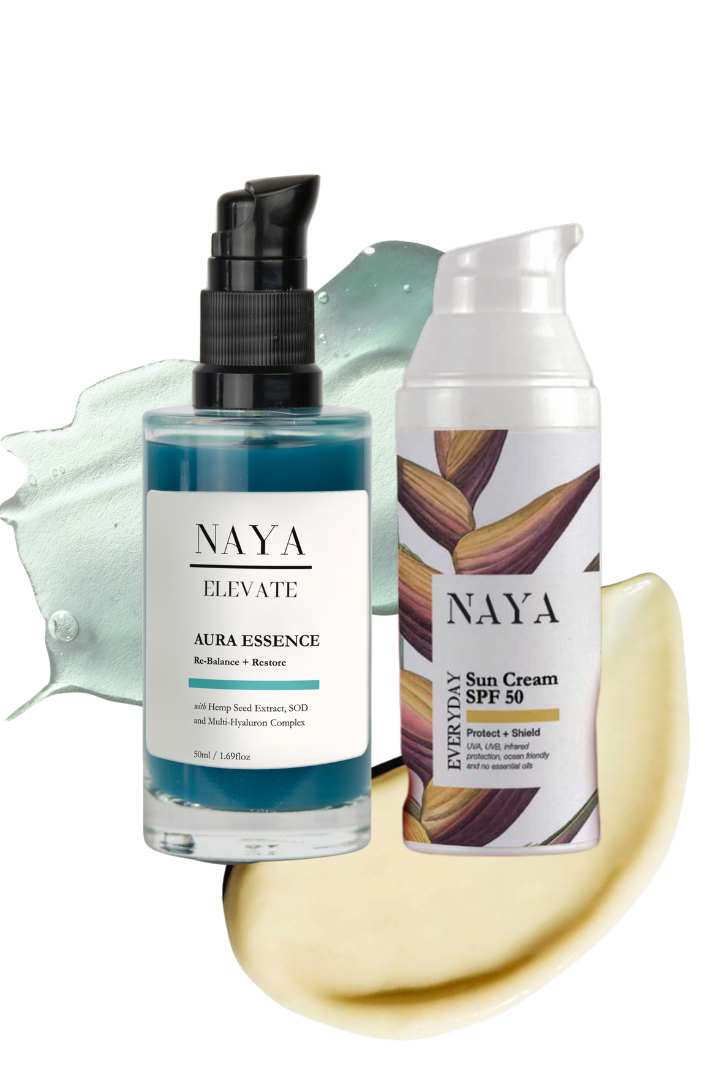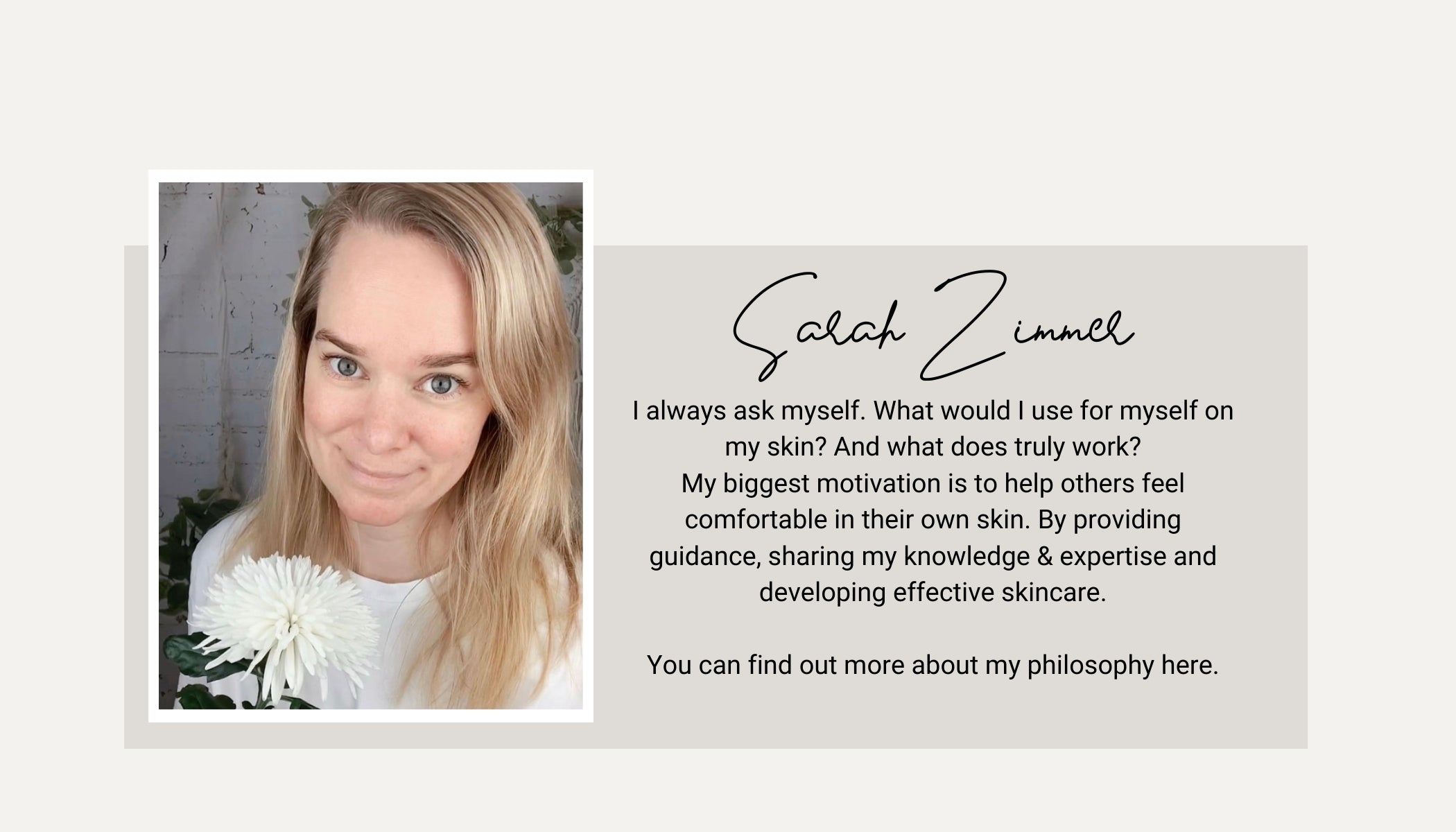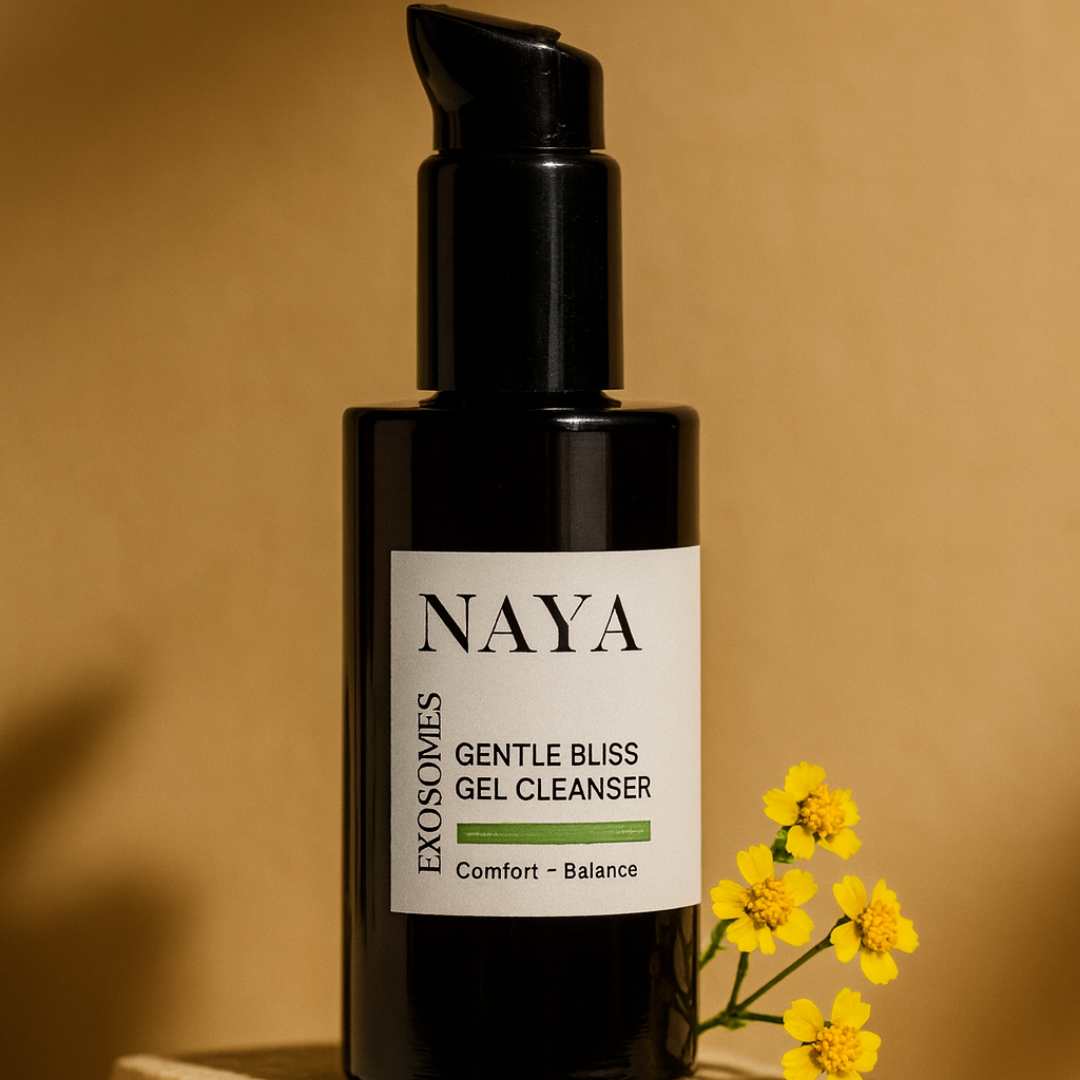The Ultimate Guide to Treating Rosacea for Sensitive Skin
Rosacea vs. Acne: Understanding the Differences
Rosacea. It’s a common skin condition, often mistaken for acne, that can leave you flushed and frustrated. As April is #RosaceaAwarenessMonth we’ve put together this rosacea treatment guide to help you achieve calmer, clearer skin.
Although both rosacea and acne are categorised as inflammatory skin conditions, it’s important to note that they are separate conditions. Unlike acne’s blackheads and whiteheads, rosacea presents with persistent facial redness, flushing, and sometimes even visible blood vessels. Remember, this distinction is crucial. It’s common to see both conditions occurring simultaneously, but it’s important to note that certain acne treatments can worsen rosacea. If you are in doubt about which rosacea treatment plan to follow, you can book an online consultation with our founder.
The Four Faces of Rosacea
Rosacea isn’t a one-size-fits-all condition. It can manifest in both sexes, in fair and dark complexions and at any age. Here are the various subtypes:
- Rosacea Subtype 1: Facial redness and flushing – the most common subtype, often triggered by hot beverages or spicy foods.
- Rosacea Subtype 2: Papules and pustules – small, red bumps with or without pus, appearing alongside facial redness. (Previously and incorrectly known as “acne rosacea”.)
- Rosacea Subtype 3: Thickening skin – primarily affecting the nose (rhinophyma), this subtype leads to a bumpy, enlarged texture.
- Rosacea Subtype 4: Ocular rosacea – affects the eyes, causing irritation, dryness, and bloodshot appearance.
Unfortunately, there’s no definitive test for rosacea and diagnosis usually relies on a dermatologist’s visual assessment. That being said, let’s explore some potential causes, triggers and potential rosacea treatment options based on recent studies.
Rosacea Treatment: The Gut Connection
Rosacea remains a mystery in many respects. While we still do not know the exact cause, there are various hypotheses. These include hyper-reactive blood vessels, abnormal immune responses in the skin, the presence of microscopic skin mites called Demodex, exposure to electromagnetic fields (EMF), and genetic factors. However, recent research suggests a compelling link between rosacea and inflammatory conditions associated with an imbalanced gut microbiome.
Just like our skin microbiome, the gut microbiome is a complex ecosystem of trillions of bacteria. These bacteria are crucial in digestion, nutrient absorption, and immune function. Emerging evidence suggests an imbalanced gut microbiome, often called dysbiosis, which can lead to increased intestinal permeability (leaky gut), might contribute to chronic inflammatory conditions throughout the body, including rosacea.
Studies have also shown that rosacea sufferers have a different composition of gut bacteria compared to non-sufferers. There’s also a higher prevalence of gastrointestinal issues like irritable bowel syndrome (IBS) and small intestinal bacterial overgrowth (SIBO) in rosacea patients.
Stress and Rosacea
Life’s pressures can be a trigger for rosacea flare-ups. The body’s response to stress involves the release of hormones like cortisol. Chronically elevated cortisol levels can contribute to inflammation, impacting the skin and potentially worsening rosacea symptoms.
Here are some strategies to manage stress and potentially reduce rosacea flare-ups:
- Mindfulness practices: Meditation, yoga, and deep breathing exercises can help calm the mind and reduce stress hormones.
- Regular exercise: Physical activity is a potent stress reliever and can improve overall well-being. However, be mindful of activities that trigger rosacea, such as strenuous exercise in hot weather.
- Prioritising sleep: Adequate sleep is essential for overall health and stress management. Aim for 7-8 hours of quality sleep each night.
This is a topic we’ve discussed frequently, but we want to stress the significant impact stress has on skin health, along with other factors like UV rays and pollution.
Rosacea and Menopause
Fluctuations in hormone levels, particularly oestrogen, during menopause, can be a potential trigger for rosacea, or worsen existing symptoms. As oestrogen levels decline during menopause, the skin can become thinner and more fragile. This compromised barrier function can be more susceptible to environmental triggers and inflammation, leading to rosacea flare-ups. Additionally, some theorise that the vasodilatory effects of declining oestrogen might contribute to the flushing and redness characteristic of rosacea. If you’re experiencing rosacea for the first time or noticing a worsening of symptoms around menopause, consulting a healthcare professional is necessary to develop a personalised rosacea treatment plan that addresses both concerns.
Rosacea and Sun Exposure
Sunscreen isn’t just a necessity for beach days; it’s a crucial daily part of any rosacea treatment plan. With over 80% experiencing worsened rosacea symptoms due to sun exposure, embracing sun protection is essential:
- Limit sun exposure whenever possible.
- Sunscreen all year round: UV rays penetrate clouds, so daily sunscreen use is a must.
- Additional protection: Use a sun head as additional protections.
Sunscreen for Rosacea-Prone Skin
With all our rosacea treatment plans, we suggest the NAYA Everyday Sun Cream SPF 50+, a sunscreen formulated specifically for sensitive skin. This lightweight, fragrance-free moisturiser provides SPF 50+ protection for sensitive skin.
Skincare, a Must For Rosacea Treatment
When it comes to rosacea management, less is more and as with all skincare routines, the foundation lies in selecting the right cleanser. Cleanse your skin daily using a gentle cleanser that rinses off easily and maintains a neutral or slightly acidic pH balance. Steer clear of abrasive scrubs and astringent toners and remember to rinse off using lukewarm water always. We recommend Everyday Cleansing Oil.
The next step is to boost your skin’s natural barrier function, as it acts as the body’s first line of defence against environmental irritants, allergens, and pathogens. In healthy skin, this barrier is composed of skin cells held together by lipids (fats) and helps retain moisture. However, in rosacea, this barrier function is often compromised.
Here's why a healthy barrier function is so important for rosacea-prone skin:
- Reduced Irritation: A compromised barrier allows irritants to penetrate the skin more easily, triggering inflammation and worsening rosacea symptoms like redness, stinging, and burning.
- Improved Hydration: A healthy barrier helps retain moisture in the skin, keeping it plump and hydrated. Dehydrated skin is often more sensitive and prone to flare-ups.
- Strengthens the Microbiome: The skin’s surface harbours a diverse community of microorganisms, some beneficial and some harmful. A healthy barrier helps maintain a balanced microbiome, promoting the growth of good bacteria that can crowd out potential troublemakers
By incorporating a fragrance-free, calming moisturiser such as the Everyday Day Cream into your routine, you can strengthen your skin’s natural barrier function, a must for rosacea treatment. This will help reduce irritation, improve hydration, and potentially minimise flare-ups.
Rosacea Skincare Tip:
Remember, rosacea can manifest differently for everyone. This rosacea treatment guide provides a foundation, but consulting a skincare professional is vital to creating a personalised treatment plan. (We’re here to help.) With the right approach, you can manage rosacea and achieve a calmer, more confident complexion.
And discover our newly launched RosēaCalm.
Articles you might like:
3 Steps to soothe and calm skin Understanding Facial Flushing: Symptoms, Causes and Solutions











Leave a comment